What's New
Displaying results 2111 - 2120 of 4052

Resource | Guidelines,
The Guidelines for the Management of Common and Opportunistic Infections among HIV-infected Infants, Children and Adolescents in Cambodia is a second edition and an important document to ensure the consistent and high quality treatment and care of HIV-infected children at all pediatric AIDS care sites in Cambodia. The guideline includes recommendations for the prevention and treatment of caring for children in Cambodia, supported by the latest information from international guidelines and primary literature.
This guideline should be used as an important tool to assist pediatricians in providing high quality and standardized treatment to HIV-infected children aged less than 15 years in Cambodia.

Resource | Publications,
Ending AIDS by 2030 is an integral part of the Sustainable Development Goals (SDGs), which were unanimously adopted by United Nations Member States in 2015. The lessons learned in responding to HIV will play an instrumental role in the success of many of the SDGs, notably SDG 3, good health and well-being, and the goals on gender equality and women’s empowerment, reduced inequalities, global partnerships and just, peaceful and inclusive societies.
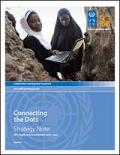
Resource | Publications,
The HIV, Health and Development Strategy 2016-2021: Connecting the Dots elaborates UNDP's work on HIV and health in the context of the 2030 Agenda for Sustainable Development. UNDP has an important role in supporting health outcomes by helping countries to address the social, cultural and economic determinants of HIV and health, in partnership with UN entities and other organizations. This is done through UNDP’s core work in reducing inequalities and social exclusion that drive HIV and poor health, promoting effective and inclusive governance for health, and building resilient and sustainable systems for health.
UNDP also contributes through its coordinating and convening role in bringing together multiple partners and resources at national and local levels.
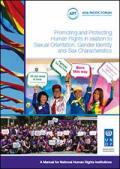
Resource | Tools,
The manual provides many case studies of the work of NHRIs on human rights issues affecting lesbian, gay, bisexual, transgender and intersex people. Some are short examples of activities undertaken. Others are longer descriptions of comprehensive programs. The case studies provide information on past and present activities of individual NHRIs and offer inspiration to all NHRIs for future projects. They assist NHRIs to learn from each other.
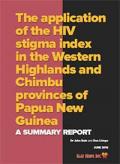
Resource | Publications,
The research aimed to provide data on how stigma and discrimination create barriers to accessing services and how they impede the scaling-up of delivery of antiretroviral therapy (ART) in Papua New Guinea. Another aim was to detail the levels of stigma and discrimination faced by people living with HIV (PLHIV) in the different provinces and regions.
There are differing experiences of PLHIV based on gender, sexuality or gender identity. The research aimed to determine and understand the contributing factors to stigma and discrimination faced by PLHIV through a research project that valued differences across gender and sexuality and generated information about those different experiences.
The international Stigma Index was the tool used to identify those situations that created heightened risks for PLHIV.
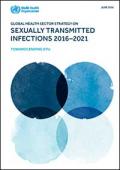
Resource | Publications,
The strategy, once adopted, and its implementation will contribute to a radical decline in new sexually transmitted infections and in deaths related to such infections (including still births and cervical cancer), while improving individual health, men’s and women’s sexual health, and the well-being of all people. It will guide efforts to: accelerate and focus comprehensive prevention efforts through scaling up evidence-based combined behavioural, biomedical and structural approaches; facilitate people’s access to information on their sexually transmitted infection status; improve access to treatment and comprehensive long-term care when needed; and challenge pervasive stigmatization and discrimination. The strategy promotes a people-centred approach, grounded in principles of human rights, gender equality and health equity.

Resource | Publications,
This is the first global health sector strategy on viral hepatitis, a strategy that contributes to the achievement of the 2030 Agenda for Sustainable Development.
It covers the first six years of the post-2015 health agenda, 2016–2021, building on the Prevention and Control of Viral Hepatitis Infection: Framework for Global Action, and on two resolutions on viral hepatitis adopted by the World Health Assembly in 2010 and in 2014.
The strategy addresses all five hepatitis viruses (hepatitis A, B, C, D and E), with a particular focus on hepatitis B and C, owing to the relative public health burden they represent.
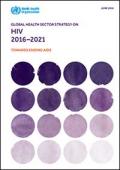
Resource | Publications,
The international community has committed to ending the AIDS epidemic as a public health threat by 2030 – an ambitious target of the 2030 Agenda for Sustainable Development adopted by the United Nations General Assembly in September 2015. Interim targets have been established for 2020.
The strategy promotes a people-centred approach, grounded in principles of human rights and health equity. It will contribute to a radical decline in new HIV infections and HIV-related deaths, while also improving the health and well-being of all people living with HIV. It will guide efforts to accelerate and focus HIV prevention, enable people to know their HIV status, provide antiretroviral therapy and comprehensive long-term care to all people living with HIV, and challenge pervasive HIV-related stigmatization and discrimination.

Resource | Fact Sheets,
In June 2016, there were 841 new HIV antibody sero-positive individuals reported to the HIV/AIDS & ART Registry of the Philippines (HARP) [Table 1]. This was 9% higher compared to the same period last year (772). This was the highest number of cases ever reported since 1984. Eighty-eight percent were asymptomatic at the time of reporting.
Most (95%) were male. The median age was 28 years old (age range: 1 year-66 years). More than half belong to the 25-34 year age group while 27% were youth aged 15-24 years.
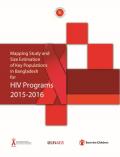
Resource | Publications,
Countries experiencing concentrated epidemics of HIV need the size of key populations (KPs) to guide the national response on HIV and AIDS. Conducting a robust method to estimate the size of KPs is quite challenging as most of them are hidden and do not want to disclose their identity due to stigma and discrimination associated with their behaviour. KPs in Bangladesh include female sex workers, people who inject drugs, men who have sex with men including transgender/Hijra and sex workers, and clients of sex workers in the country or abroad.





